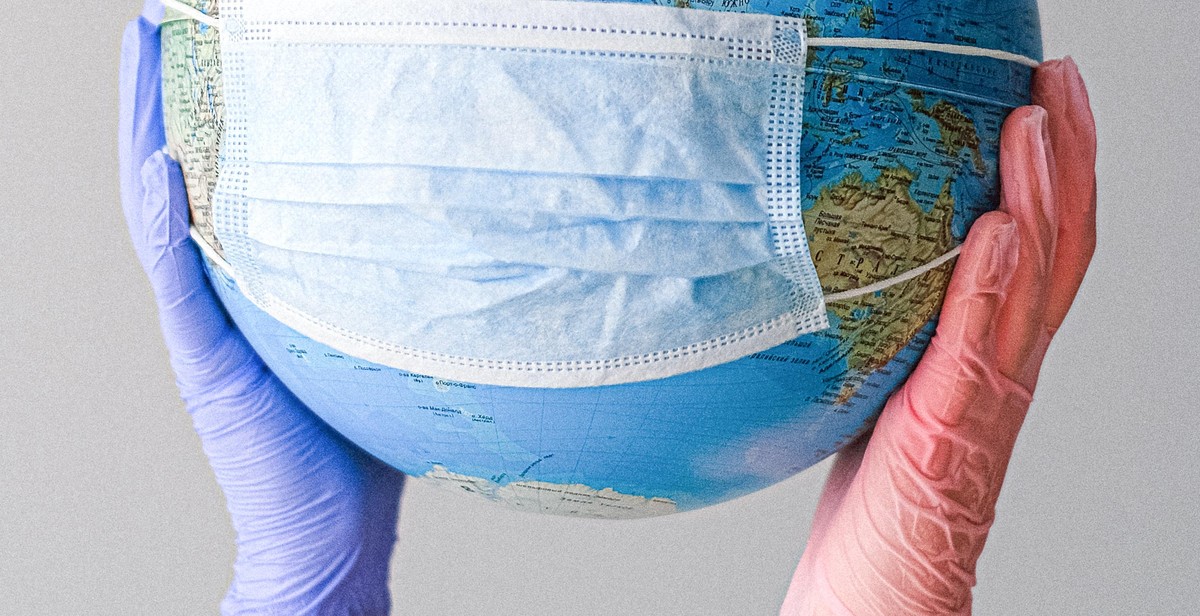How to Conduct Vaccine Surveillance: Monitoring Vaccine Safety and Efficacy
Vaccines are an essential tool to prevent the spread of infectious diseases. However, like any medical intervention, vaccines can have adverse effects. Therefore, it is crucial to monitor vaccine safety and efficacy continually. Vaccine surveillance is the process of collecting and analyzing data on adverse events following immunization (AEFI) and vaccine effectiveness to ensure that vaccines are safe and effective.
Why is Vaccine Surveillance Important?
Vaccine surveillance plays a crucial role in ensuring that vaccines are safe and effective. It helps identify potential safety concerns and enables public health officials to take appropriate actions to minimize the risk of AEFI. Vaccine surveillance also provides valuable information on vaccine effectiveness, which can help guide vaccine policy and improve vaccination programs.
How is Vaccine Surveillance Conducted?
Vaccine surveillance involves collecting data from various sources, including healthcare providers, vaccine manufacturers, and the general public. The data collected is analyzed to identify any potential safety concerns or trends in AEFI. Vaccine effectiveness is also assessed using various methods, including randomized controlled trials, observational studies, and modeling.
In this article, we will discuss the different methods of vaccine surveillance and the importance of monitoring vaccine safety and effectiveness continually.

What is Vaccine Surveillance?
Vaccine surveillance is the process of monitoring the safety and efficacy of vaccines after they have been approved and are being used in the general population. This is an important aspect of public health as it helps to identify any adverse reactions or side effects that may not have been detected during clinical trials.
Passive Surveillance
Passive surveillance is the most common form of vaccine surveillance. It involves monitoring and collecting reports of adverse events that are voluntarily submitted by healthcare providers, patients, or vaccine manufacturers. These reports are then analyzed to identify any patterns or trends that may suggest a safety concern with a particular vaccine.
Passive surveillance is a valuable tool for detecting rare adverse events that may not have been identified during clinical trials. However, it is limited by the fact that it relies on voluntary reporting, which can lead to underreporting of adverse events.
Active Surveillance
Active surveillance is a more proactive form of vaccine surveillance. It involves actively monitoring a defined population to identify any adverse events that may be associated with a particular vaccine. This can be done through various methods, such as medical record review, patient surveys, or electronic health record data analysis.
Active surveillance allows for more comprehensive monitoring of vaccine safety, as it can identify adverse events that may not have been reported through passive surveillance. It is particularly useful for monitoring the safety of new vaccines or vaccines that are being used in new populations.
Conclusion
Vaccine surveillance is a critical component of public health. By monitoring the safety and efficacy of vaccines, we can ensure that they continue to be effective and safe for use in the general population. Both passive and active surveillance are valuable tools for detecting adverse events associated with vaccines, and they should be used in combination to provide a comprehensive picture of vaccine safety.

Why is Vaccine Surveillance Important?
Vaccine surveillance is critical for ensuring public health safety. It is a process of monitoring and analyzing data related to vaccine safety and efficacy. The information collected through vaccine surveillance helps in identifying potential safety concerns and making necessary changes to vaccine policies and recommendations.
There are several reasons why vaccine surveillance is important:
- Ensuring vaccine safety: Vaccine surveillance helps in identifying adverse events that may occur after vaccination. By analyzing this data, researchers can determine whether the vaccine is safe for use and make necessary changes if required.
- Monitoring vaccine efficacy: Vaccine surveillance also helps in monitoring vaccine efficacy. It helps researchers determine whether the vaccine is effective in preventing the target disease and how long the protection lasts.
- Identifying new vaccine needs: Vaccine surveillance helps in identifying new vaccine needs. By analyzing disease trends and vaccine coverage rates, researchers can determine which vaccines are needed to prevent the spread of disease.
- Tracking vaccine-preventable disease outbreaks: Vaccine surveillance helps in tracking vaccine-preventable disease outbreaks. By monitoring disease outbreaks, researchers can determine whether the vaccine is effective in preventing the spread of disease and make necessary changes to vaccine policies and recommendations.
Vaccine surveillance is also important for building public trust in vaccines. When people have confidence in the safety and efficacy of vaccines, they are more likely to get vaccinated. This, in turn, helps in preventing the spread of diseases and protecting public health.
| Key Takeaways: |
|---|
| Vaccine surveillance is a critical process of monitoring and analyzing data related to vaccine safety and efficacy. |
| Vaccine surveillance helps in ensuring vaccine safety, monitoring vaccine efficacy, identifying new vaccine needs, and tracking vaccine-preventable disease outbreaks. |
| Vaccine surveillance is important for building public trust in vaccines and protecting public health. |

How to Conduct Vaccine Surveillance: Monitoring Vaccine Safety and Efficacy
Vaccine surveillance is the process of monitoring the safety and effectiveness of vaccines. It involves collecting and analyzing data on vaccine use, adverse events following immunization (AEFIs), and vaccine effectiveness to ensure that vaccines are safe and effective for use in the general population. In this section, we will discuss how to conduct vaccine surveillance by establishing vaccine registries, monitoring AEFIs, and conducting vaccine effectiveness studies.
Establishing Vaccine Registries
Vaccine registries are databases that track vaccine use and the health outcomes of vaccinated individuals. They are an essential tool for vaccine surveillance as they provide real-time data on vaccine coverage, vaccine safety, and vaccine effectiveness. To establish a vaccine registry, follow these steps:
- Identify the population to be included in the registry (e.g., children, adults, healthcare workers).
- Determine the data elements to be collected (e.g., vaccine type, date of vaccination, adverse events).
- Select a data management system to store and analyze the data.
- Develop policies and procedures for data collection, data quality, and data sharing.
- Train staff on data collection and management procedures.
Monitoring Adverse Events Following Immunization (AEFIs)
AEFIs are any untoward medical occurrence that follows immunization, which may or may not be related to the vaccine. Monitoring AEFIs is crucial for vaccine safety surveillance. To monitor AEFIs, follow these steps:
- Establish a system for healthcare providers to report AEFIs.
- Collect and analyze data on reported AEFIs.
- Investigate serious or unexpected AEFIs to determine if they are related to the vaccine.
- Communicate AEFI findings to stakeholders (e.g., healthcare providers, vaccine manufacturers, regulatory agencies).
Conducting Vaccine Effectiveness Studies
Vaccine effectiveness studies are used to evaluate how well vaccines work in the real world. They are essential for vaccine surveillance as they provide data on vaccine effectiveness against specific diseases and in different populations. To conduct vaccine effectiveness studies, follow these steps:
- Select the vaccine and disease to be studied.
- Define the study population and study design.
- Collect and analyze data on vaccine coverage and disease incidence.
- Calculate vaccine effectiveness using appropriate statistical methods.
- Communicate study findings to stakeholders (e.g., healthcare providers, vaccine manufacturers, regulatory agencies).
| Step | Description |
|---|---|
| Establishing Vaccine Registries | Identify the population, data elements, data management system, policies and procedures, and staff training. |
| Monitoring AEFIs | Establish a reporting system, collect and analyze data, investigate serious or unexpected AEFIs, and communicate findings. |
| Conducting Vaccine Effectiveness Studies | Select the vaccine and disease, define the study population and design, collect and analyze data, calculate vaccine effectiveness, and communicate findings. |

Challenges of Vaccine Surveillance
Vaccine surveillance is crucial for ensuring the safety and efficacy of vaccines. However, there are several challenges that need to be addressed in order to carry out effective vaccine surveillance. Some of the major challenges are:
Underreporting of Adverse Events Following Immunization (AEFIs)
One of the major challenges in vaccine surveillance is the underreporting of AEFIs. Not all AEFIs are reported, which makes it difficult to assess the true safety profile of a vaccine. Healthcare providers may not report AEFIs due to lack of awareness, time constraints, or fear of legal liability. Patients may also not report AEFIs due to lack of knowledge or fear of vaccination.
Difficulty in Identifying Causal Relationship
Another challenge in vaccine surveillance is the difficulty in identifying the causal relationship between a vaccine and an adverse event. AEFIs can occur due to various reasons, such as underlying medical conditions, concomitant medications, or coincidental events. It is important to differentiate between true vaccine-related AEFIs and those that are unrelated to vaccination.
Variability in Vaccine Uptake and Coverage
The variability in vaccine uptake and coverage is another challenge in vaccine surveillance. The safety and efficacy of a vaccine can vary depending on the population in which it is administered. Factors such as age, gender, ethnicity, and underlying medical conditions can affect vaccine uptake and coverage. Therefore, it is important to monitor vaccine safety and efficacy across different populations.
| Challenge | Description |
|---|---|
| Underreporting of AEFIs | Not all AEFIs are reported, which makes it difficult to assess the true safety profile of a vaccine. |
| Difficulty in Identifying Causal Relationship | AEFIs can occur due to various reasons, making it difficult to differentiate between true vaccine-related AEFIs and those that are unrelated to vaccination. |
| Variability in Vaccine Uptake and Coverage | The safety and efficacy of a vaccine can vary depending on the population in which it is administered. |

Conclusion
Conducting vaccine surveillance is crucial in monitoring vaccine safety and efficacy. The process involves collecting and analyzing data from various sources to identify any adverse events following immunization, vaccine coverage, and vaccine-preventable disease incidence. Through vaccine surveillance, public health officials can make informed decisions regarding vaccine policies and recommendations.
It is important to note that vaccine surveillance is an ongoing process that requires collaboration between different stakeholders, including healthcare providers, vaccine manufacturers, and regulatory agencies. The information gathered through vaccine surveillance can help in the early detection of potential safety issues, leading to prompt action to protect public health.
As a professional and experienced content creator, I have seen the impact of vaccine surveillance firsthand. The process has played a crucial role in ensuring the safety and efficacy of vaccines, leading to improved public health outcomes. I encourage healthcare providers, researchers, and policymakers to continue prioritizing vaccine surveillance to ensure continued vaccine safety and efficacy.
Overall, conducting vaccine surveillance is an essential component of vaccine development, distribution, and administration. It is a continuous process that requires the collaboration of various stakeholders to ensure the safety and efficacy of vaccines. By prioritizing vaccine surveillance, we can make informed decisions that protect public health and prevent vaccine-preventable diseases.
